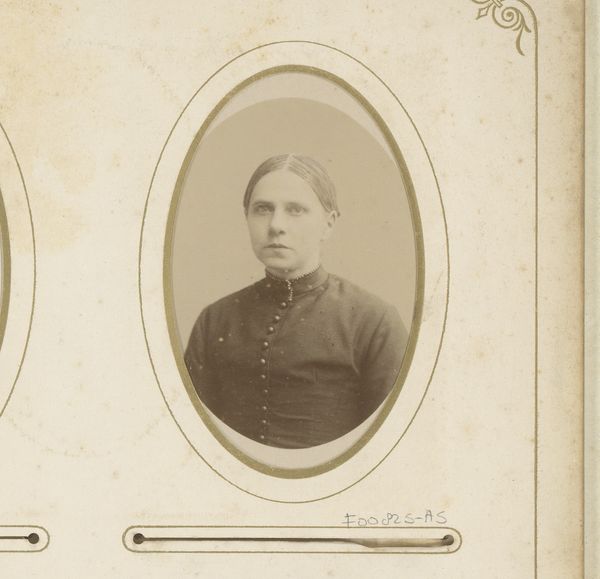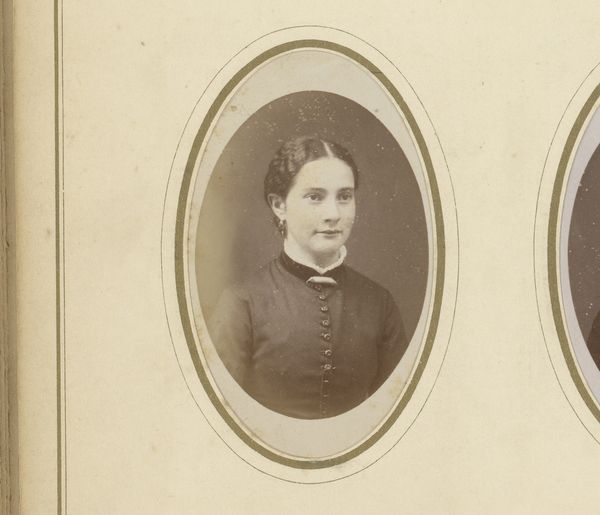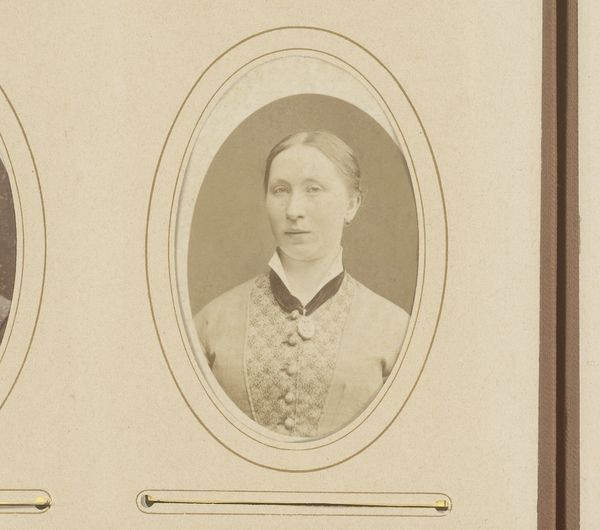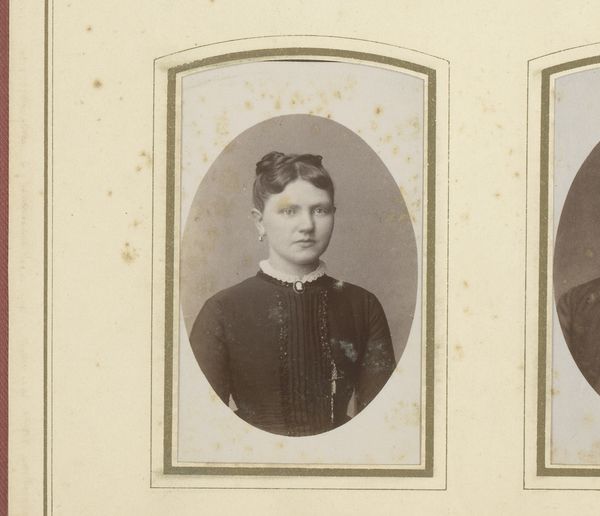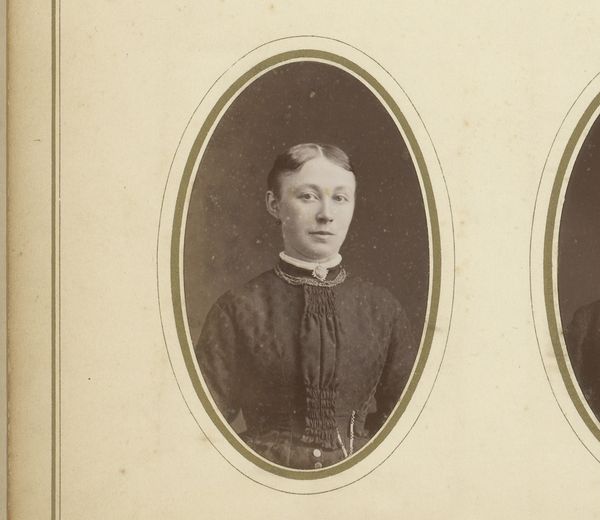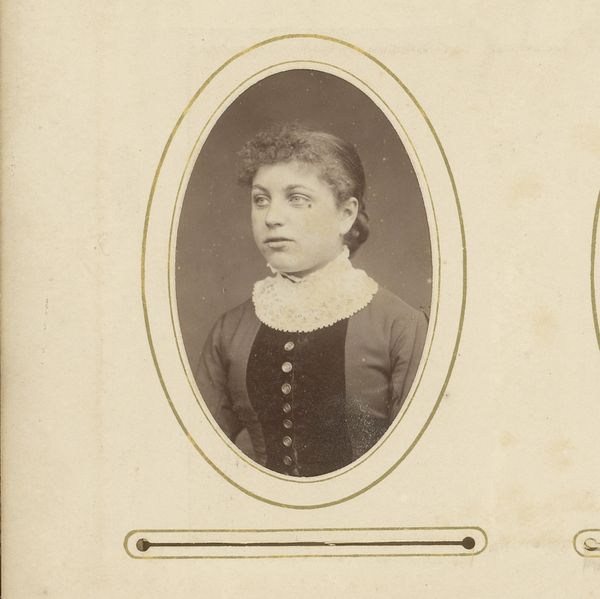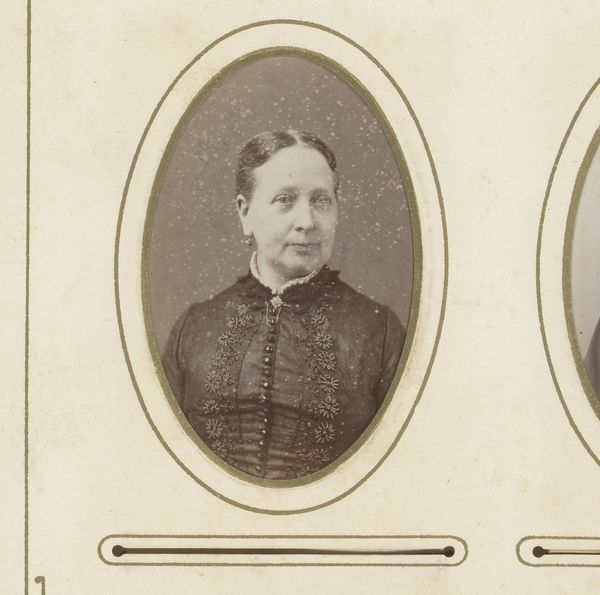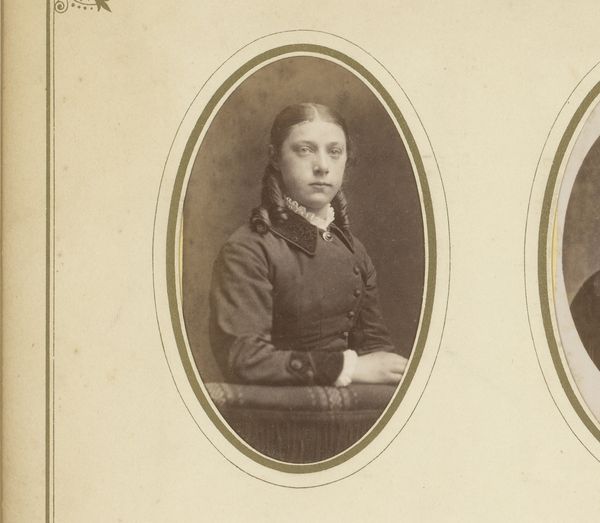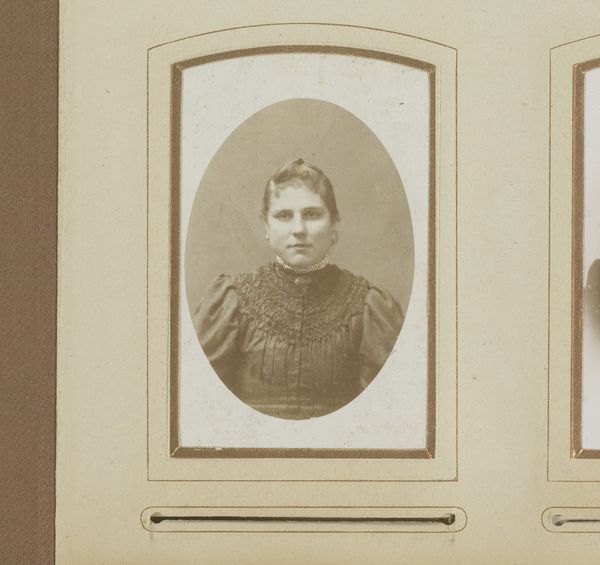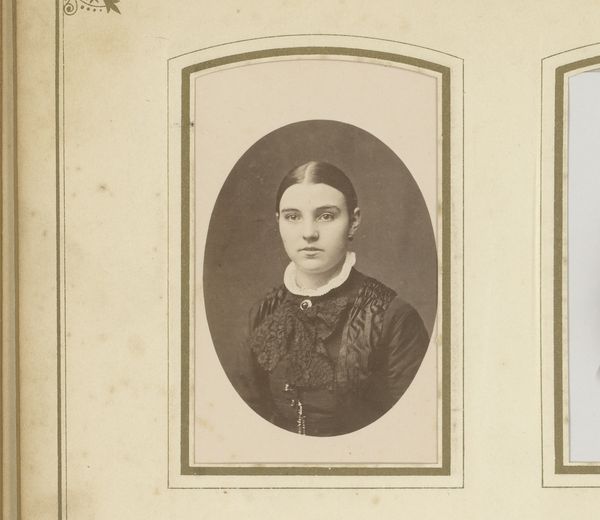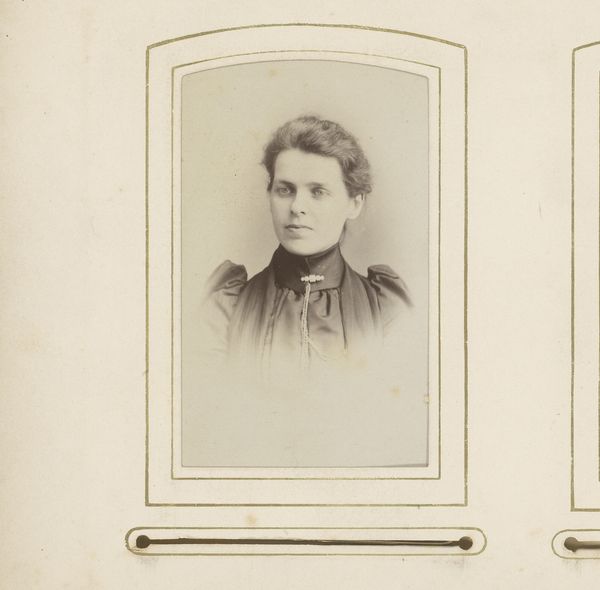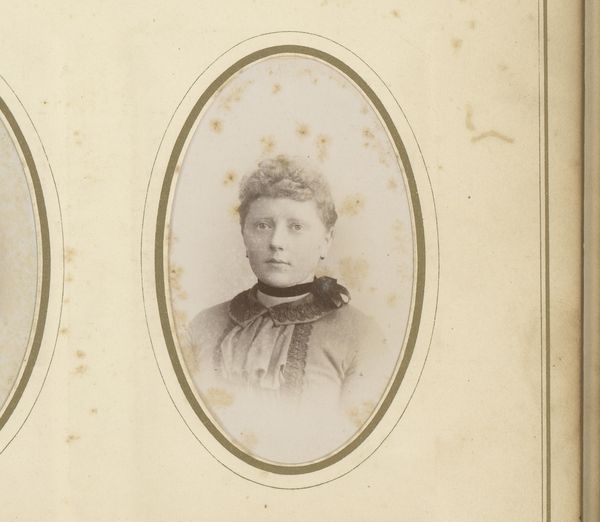
photography, gelatin-silver-print
#
sculpture
#
photography
#
historical photography
#
gelatin-silver-print
#
19th century
Dimensions: height 81 mm, width 52 mm
Copyright: Rijks Museum: Open Domain
Editor: Here we have "Portret van een vrouw met ketting," dating from sometime between 1856 and 1889. It's a gelatin silver print – an early photographic process. Looking at it, I’m struck by the detail, especially the rendering of the sitter's dress and jewelry. What’s your perspective on this portrait? Curator: Considering this gelatin-silver print, I immediately think about the materiality of photography itself. The collodion process, the silver, the glass plate...it was all very labour-intensive. Who had access to this technology, and who could afford to sit for such a portrait? Editor: That’s a great point. The sitter's jewelry—the elaborate necklace—suggests a certain economic status as well. Curator: Exactly! Consider also the social context: mid-to-late 19th century, burgeoning industrialization, growing middle classes. Portrait photography became a way to record and display social standing. What does the gelatin silver printing process tell us? The labor required versus, say, earlier daguerreotypes, versus later, simpler photographic processes. Editor: So, the choice of gelatin silver impacts not just the final image, but also tells us about accessibility and shifting technologies of the era. It brings attention to both material processes and how accessible they are at a certain time. Curator: Precisely. The “how” something is made often reflects a “why.” And considering that "why," in its social context, can tell us so much. Editor: I never thought about photography this way before - beyond just the image captured. Thank you. Curator: And I have to keep reminding myself to look closer at that captured image as material culture. It works both ways.
Comments
No comments
Be the first to comment and join the conversation on the ultimate creative platform.
